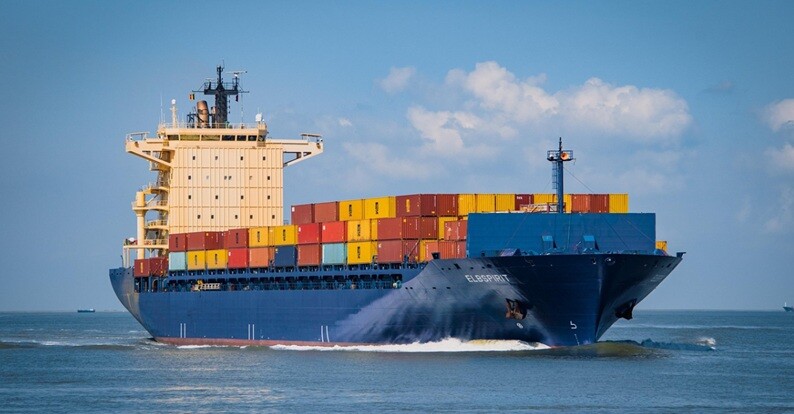If you’re running an online store in 2025, there is a great chance that your products trace back to Asia. A hoodie from Vietnam, phone accessories out of Shenzhen, maybe even furniture from India: these are all things that cross the oceans. Basically, Asia still dominates manufacturing.
What’s not so simple is getting items into your customer’s hands without blowing up your margins or their patience. Shipping rules have shifted, trade routes have bent out of shape, and tax policies aren’t what they were just a year ago.
Let’s break down what you need to know to make cross-border shipping your edge, not your headache.
Current Global Shipping Realities
Retailers used to at least count on predictability, where containers out of Shanghai, for example, would go through the Suez, and into Europe on a set schedule. Not anymore.
Diversions around the Red Sea have pushed vessels south around Africa, tacking on weeks in some cases. Even the Panama Canal has had delays. Therefore, hold a little more stock and set realistic delivery expectations to avoid headaches and angry customer emails.
Why Incoterms Matter
Most new e-commerce sellers skip over Incoterms, those three-letter trade rules. This is a huge mistake because those rules determine who pays for freight, insurance, customs, and where the risk shifts.
For direct-to-consumer shipping, this usually comes down to two choices:
- DAP (Delivered at Place): It basically means that your customer pays the taxes or duties on arrival. If they refuse to pay, which happens a lot, the package boomerangs back to you.
- DDP (Delivered Duty Paid): You, the seller, cover taxes and duties in advance. More paperwork, yes, but fewer angry customers.
If you’ve ever had a buyer email, “I didn’t order this $40 customs bill,” you now know which one to pick.
Customs and Tax Rules You Can’t Ignore
In the US, the beloved $800 de minimis rule is gone. For years, it has let small parcels slide in duty-free. As of August 2025, every shipment pays its share. If you haven’t updated your checkout to reflect that, you’re either eating the cost or blindsiding your customers.
Europe has been much more strict, and for longer. All imports get VAT, and the IOSS system makes it easier for parcels under €150. The UK’s setup is similar, with VAT charged right at checkout for anything under £135.
Notice the pattern? Governments don’t want missed revenue. And customers don’t want surprise charges. Which means you need a checkout that shows duties and taxes upfront. Think of it as part of the product price, not an add-on.
Watch those HS Codes
Every shipment needs an HS code, which is basically the universal product ID for customs. It decides the duty rate and whether extra restrictions apply. Get it wrong and your shipment could be delayed, fined, or flat-out refused.
The first six digits are global. After that, each country tacks on its own details. Some products require advanced ruling. Boring, that’s true, but one wrong digit can cost you thousands in penalties.
The Lithium Battery Headache
Selling electronics? Welcome to the world of lithium battery rules. Airlines have tightened restrictions again: batteries shipped solo cannot exceed 30% charge, labels must be precise, and some carriers won’t accept them at all.
Here’s the kicker. It’s not enough for your supplier to say, “It’s fine.”
You need their UN 38.3 test reports in hand, and you need to verify your carrier’s policy. One mislabeled package can ground a whole batch. If your business depends on shipping battery-powered items, build compliance into your workflow early.
Landed Cost: A Number that Really Matters
Plenty of retailers still think shipping means “product cost + postage.” Wrong! The real number is landed cost, which is product + freight + duties + VAT + all the random courier fees.
If you don’t calculate that upfront, one of two things happens: You lose money covering it, or your customer refuses delivery. Both are painful.
A better option is to use a landed-cost calculator, a carrier service that plugs into your checkout, or tools and partners that automate your fulfillment. Customers would rather see a higher price upfront than feel tricked later. Transparency builds trust.
Managing Risk with a Moving Target
The only constant in global shipping is change. Tax rules shift, routes get disrupted, carriers rewrite their terms overnight, and so on. Therefore, it’s better to run regular compliance checkups.
From auditing your HS codes to reviewing your VAT collection setups and keeping at least two shipping partners or a trusted freight forwarder in play, you will have done the work to ensure smooth fulfillment rather than having a warehouse full of returns.
Know What You Need to Ship: Get it Done Right
Asia remains the engine room of global e-commerce, but in 2025, the rules have shifted. Retailers who keep ahead of taxes, codes, and carrier policies can turn shipping into an advantage because shipping is never invisible, not to your bottom line and not to your customers.
You may also like to read,







